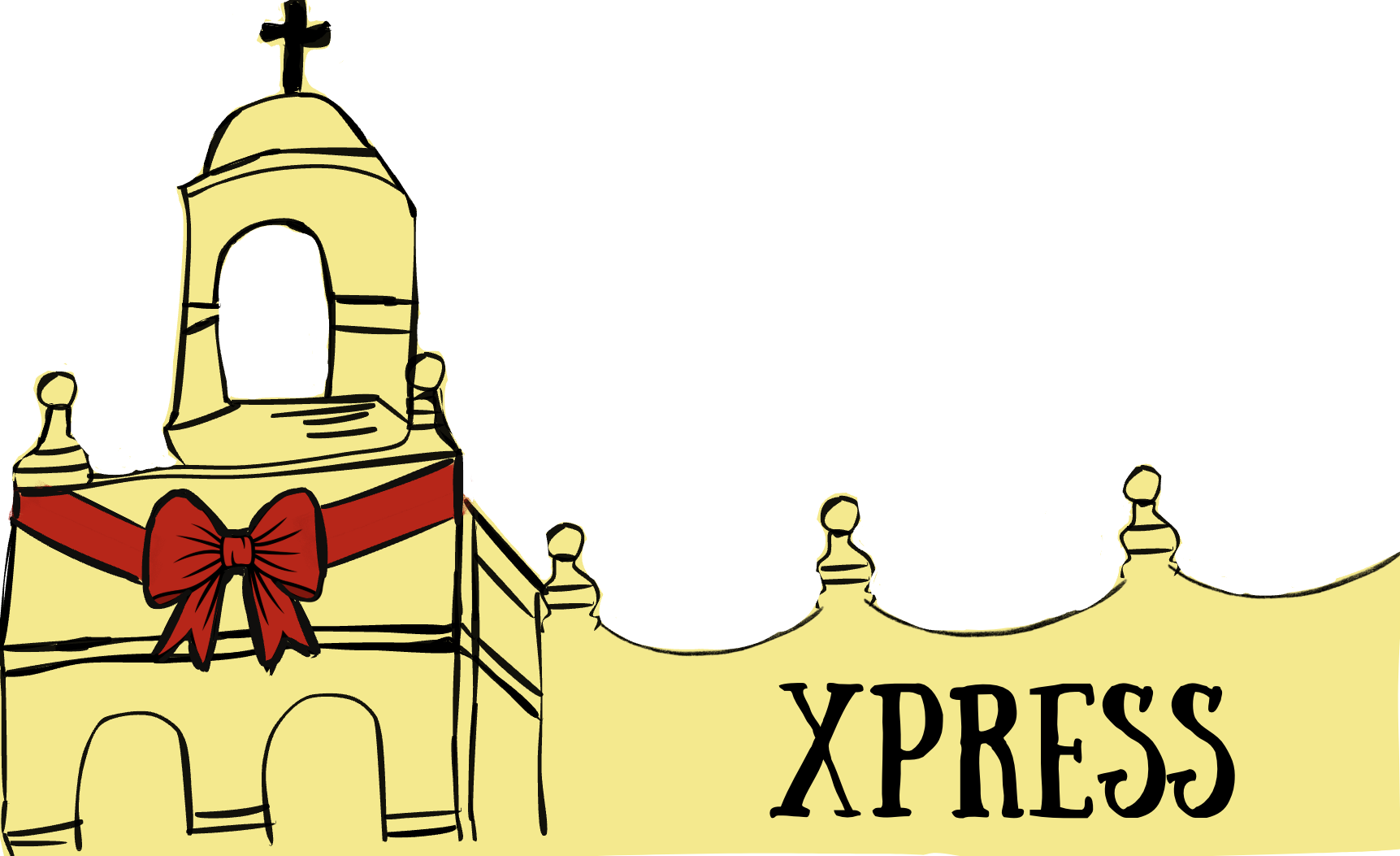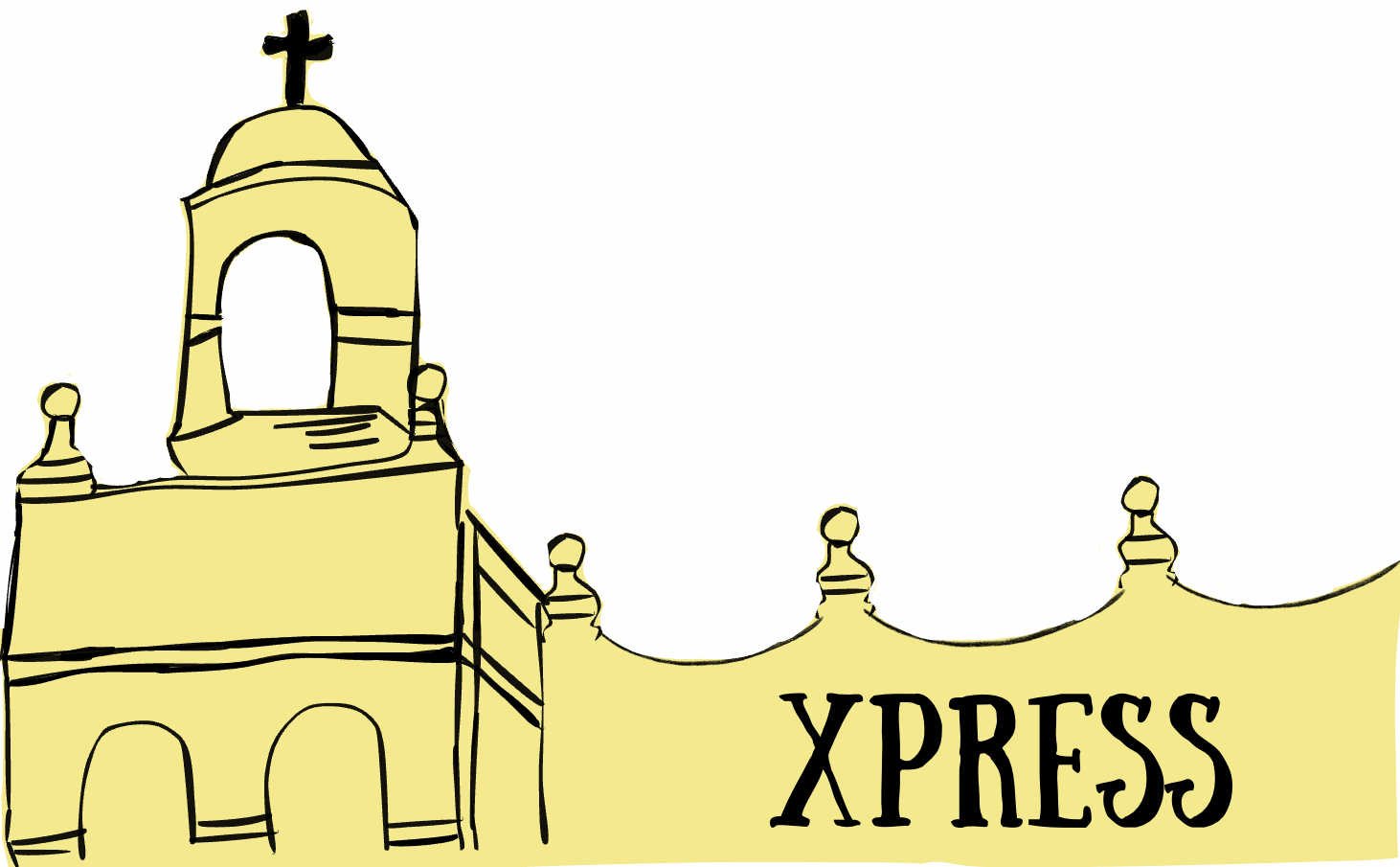The Xavier Archives
Uniforms and documents of the past can be seen in the Sister Joanie Nuckols, BVM and Sister Lynn Winsor, BVM Heritage Center in Founders Hall.
Off to the east side of Founder’s Hall is a beautiful entryway leading to a section of faculty offices. Xavier girls pass it every day, but few know that there sits an archives room filled with 77 years of rich Xavier history.
Archives are often an assemblage of historical documents, which can provide information on a place, institution or people. Polly Bayless Fitz-Gerald ‘68, Director of Advancement & Alumnae Relations at Xavier, said that the archives, “Start with the first year Xavier opened until the current day.” The room mirrors her statement.
In the storage room sits a table stacked with photos and pamphlets dating back to the 70s and even the 50s. Bookshelves in the surrounding area hold yearbooks from years past, or VHS tapes of school plays from the 80s. File cabinets are full of previous graduation pamphlets, Pierian Spring issues, and XPress newspapers. Next to these filing cabinets sit vintage Xavier uniforms, which could be anything from cheerleading outfits or skirts.
Some of these items date back to when Xavier became a school in 1943, or when Xavier had its first portion of the current campus created in 1956. Fitz-Gerald said that these items provide “a study in popular culture.” For instance, pop culture references can be seen in senior yearbook photos from 1964, where one can see an assortment of bouffant hairstyles, which were made a trend by former First Lady Jacqueline Kennedy.
When Xavier became a school in 1943, the girls did not have the same extracurricular advantages as Xavier girls do today.“It was very small, and it had very few clubs. Just basic classes, and very few electives,” said Fitz-Gerald.
Since then, Fitz-Gerald said, “Xavier has grown tremendously in size.” The physical campus, student body, academic offerings and extracurricular activities portray that, and can be seen in posters in the compact storage room. Poster after poster shows different floor plans and the blueprints of buildings added onto Xavier’s campus.
There are also large posters holding senior class photos. These photos provide a snapshot of what Xavier girls used to look like, in the way that they styled their hair, to the way they dressed. These posters are shown at alumnae gatherings, so former students are able to look back at their times in high school.
In almost 78 years of Xavier’s history, there have only been two different uniforms. Both can be seen sitting in the plaza opposite the cafeteria, showing a difference in societal standards from the 1940s to today.
One uniform shows saddle shoes, a maxi skirt, a white collared blouse with a bow tie, a blazer, and a beanie. The other depicts loafers, a white collared blouse, a gold cardigan, a chapel veil, and the renowned Xavier skirt. Gold cardigans were worn by juniors and seniors, while blue cardigans were worn by freshmen and sophomores. Girls can also find a vintage track jacket, cheerleading uniform and P.E. uniform in the plaza as well.
Other interesting items that can be seen in this area of Founders Hall are vinyl records from Xavier’s Glee Club in the 50s and 60s. What makes them even more riveting is the fact that they still work.
Another key item in the area is a typewriter, which was owned and used by one of the first BVM Sisters and former principal at Xavier, Sister Mary Walter.
While many items in the Xavier archives seem archaic, they prove Xavier’s morals and values remain timeless. “Women of faith pursuing excellence” is a term stated and re-stated by Sister Joan Fitzgerald, BVM; Sister Lynn Winsor, BVM; and Sister Joanie Nuckols, BVM, and can be seen in every archived item in Xavier’s history.
The Xavier Archives conveys not only Gator mascot costumes and brochures, but also history lessons on the school and the United States.




